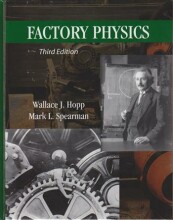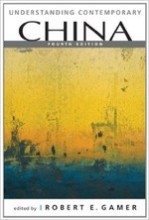The Corrupting Influence of Variability - Batching Laws
7 important questions on The Corrupting Influence of Variability - Batching Laws
Process Batching. In stations with batch operations or significant changeover times, the following statement are true/false:
1. The minimum process batch size that yields a stable system equals exactly one.
2. As process batch size becomes large, cycle time grows exponentially with batch size.
3. Cycle time at the station will be minimized for some process batch size, which may be greater than one.
1. false
2. false
3. true
What is the difference between a transfer batch and a process batch?
A transfer batch is when many parts are moved together.
A process batch is when many parts (or a number of transfer batches) are processed together.
Which two types of process batches are there? What is the difference?
Sequential batch:
- parts are produced sequentially before the workstation is changed over
Simultaneous batch:
- parts are produced simultaneously on a workstation
- Higher grades + faster learning
- Never study anything twice
- 100% sure, 100% understanding
q_editbtn
Consider figure 9.3 and assume the situation where a plant currently has a s=5 and doesn't use lot splitting (for transfer batches).
Is it better to either implement lot splitting or to reduce setup time by half if:
A: the goal is to minimize cycle times?
B: a plant cannot practically use lot sizes smaller than 30?
A: reduce setup times -> the minimum CT for CTnonsplit and s=2,5 is lower than that of CTsplit and s=5
B: implement lot splitting -> try to see why.
From what sequential process batch size (k) is using lot splitting better than not using lot splitting?
From k>1, so from k=2.
(see the technical notes)
What is the optimal transfer batch size when waiting for the conveyance device is negligable?
Explain by
1: using the example in the 9.4.3 technical notes
2: using the law in 9.4.3.
1: See formula 9.9. The CTsingle represents the cycle time without batching, so when k=1. This is the minimal CT, because when k=1, CT=CTsingle.
2: The law states that cycle times are roughly proportional to the transfer batch sizes. This means that the smallest transfer batch size yields the smallest cycle times. A batch size of 1 is the smallest possible batch size. So this would be the optimal transfer batch size.
A manager wants to improve CT in a station where processing is done sequentially and transfer batches are not split. Currently . He can either invest in a machine upgrade that would reduce the effective processing time by 25%, or he could invest the same amount of money to reduce the variation in the station to
.
What would you advise?
Currently:
CTnonsplit = 5 te
In case of the reduction of effective processing time:
CTnonsplit = 1 7/8 te (remember that u = ra te)
In case of the reduction in variability:
CTnonsplit = 2 te
The question on the page originate from the summary of the following study material:
- A unique study and practice tool
- Never study anything twice again
- Get the grades you hope for
- 100% sure, 100% understanding
































